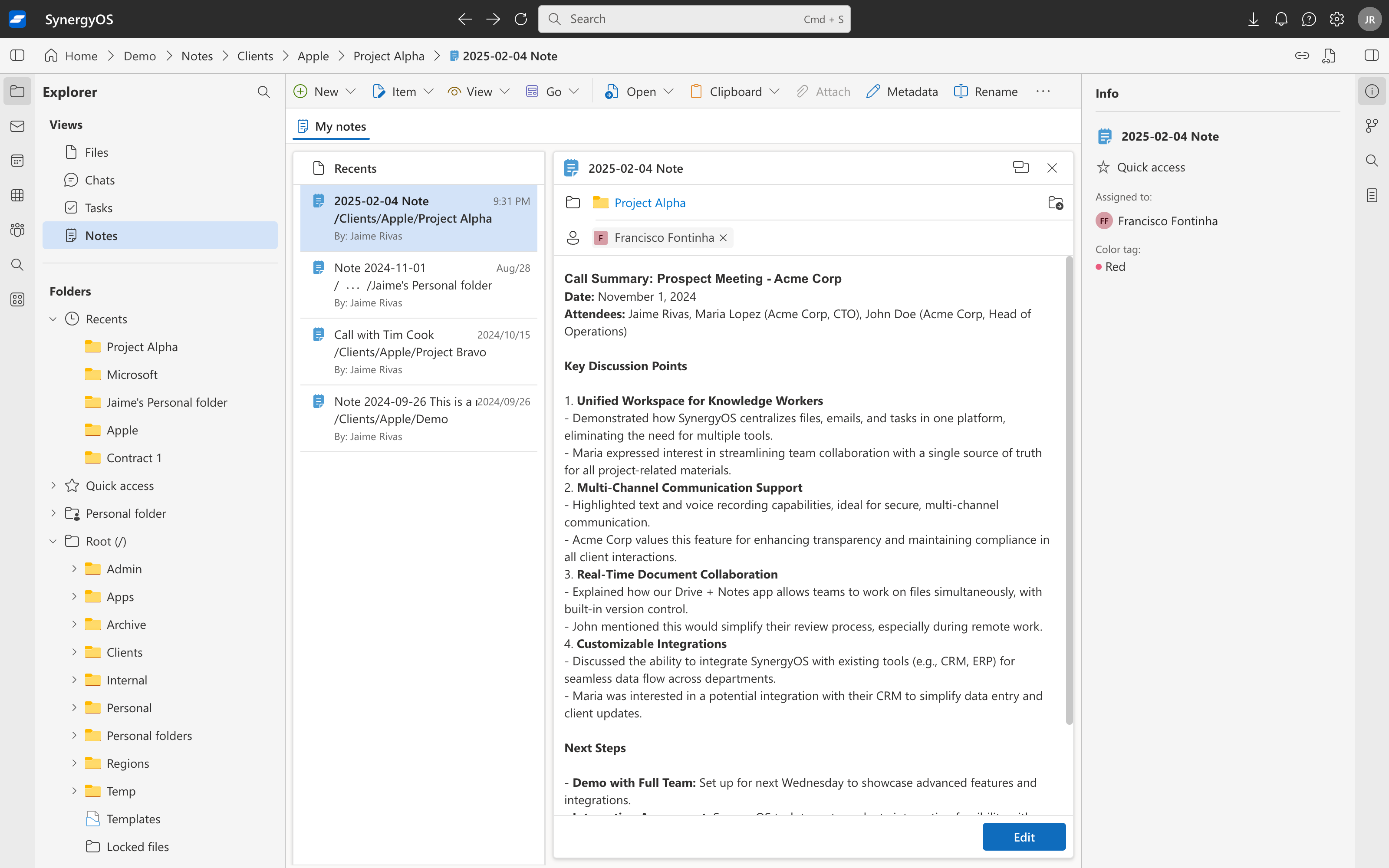Notes
1. What it is
Notes are rich-text documents stored inside folders in SynergyOS. They support formatting, metadata, permissions, version history, and auditing, so written context lives with the work it describes.

2. Why it matters
- Context stays together: keep meeting notes, call logs, and specs beside files, emails, tasks, and chats in the same folder.
- Governed access: notes inherit the folder’s permissions by default; you can switch a note to item-level permissions when needed.
- Live collaboration: co-author in the browser with instant saves and a full version trail.
- Easy retrieval: search by content, fields, tags, and the folder’s metadata scope.
3. Properties and behavior
- Location & identity: each note lives in exactly one folder. Moving or renaming does not break path links.
- Permissions & inheritance: default visibility follows the parent folder. Item-level overrides are supported but should be exceptional.
- Formatting: headings, paragraphs, lists, checklists, links, inline images; optional embeds when enabled.
- Metadata & tags: attach fields and tags to drive filters and Saved Searches. Folder metadata scopes discovery for all notes inside.
- Versioning & activity: every save creates a version; edits and significant actions appear in the folder’s activity timeline.
- Links: path links open the note or its folder; they never grant access and work for guests who already have permission.
- Attachments & references: reference files and items with links so the source of truth stays unified.
- Lifecycle: delete moves the note to trash; restore returns it to its folder. Retention follows repository policy.
4. Working with notes
- Write where the work lives: create notes inside the client or project folder so permissions and metadata are correct.
- Structure clearly: use headings, lists, and checklists; start with a brief summary at the top for scanning.
- Turn discussion into action: capture decisions and create follow-up tasks in the same folder.
- Standardize CRM workflows: use consistent titles and fields for call logs and meeting minutes so Saved Searches become reliable dashboards.
- Review history: compare versions before sharing externally to ensure the latest decisions are reflected.
5. Best practices
- Name for retrieval: include client or project identifiers and dates users actually search for.
- Prefer folder-level access: avoid item-level exceptions unless necessary.
- Template the repeatable: create reusable outlines for recurring meetings or discovery calls.
- Link, do not duplicate: reference existing files instead of pasting copies.
- Keep notes concise: one topic per note improves search quality and permissions hygiene.
6. FAQ
Do notes follow folder permissions automatically? Yes. Inheritance is the default. You can set note-level permissions when an exception is required.
Will links break if I move or rename a note? No. Path links resolve to the current location.
Can guests view notes? Yes, if the folder or the note grants them access. Path links do not add access; they only open locations for permitted users.
Can multiple people edit a note at the same time? Yes. Live co-authoring is supported; versions record the change history.